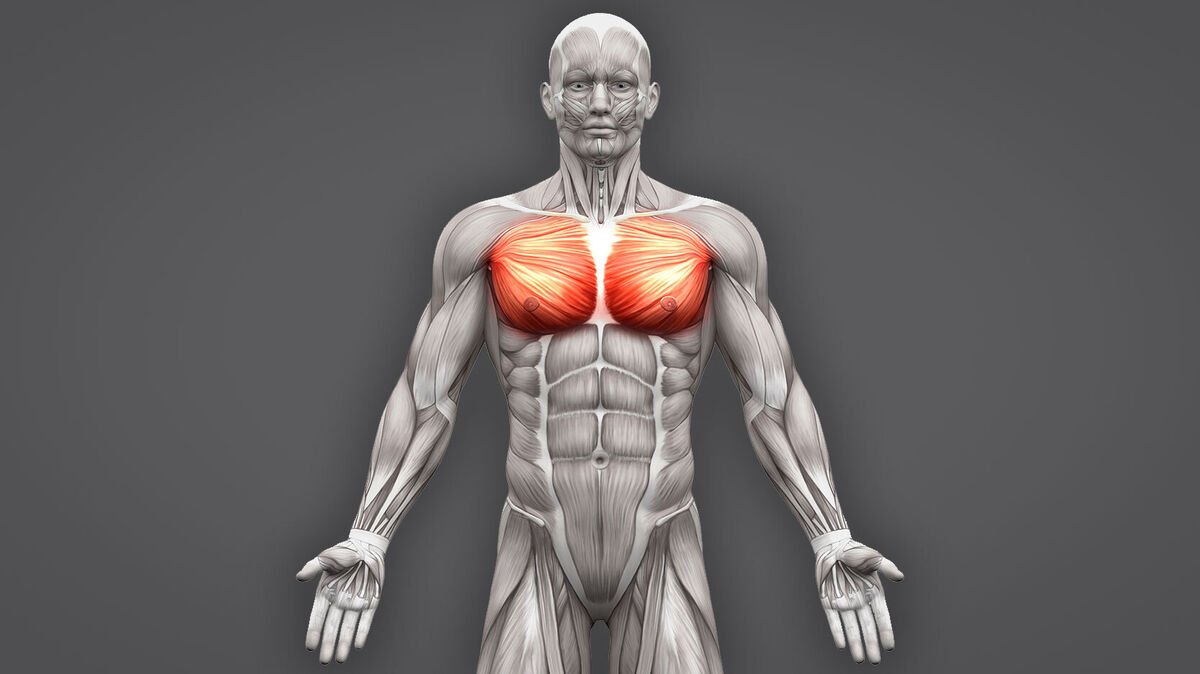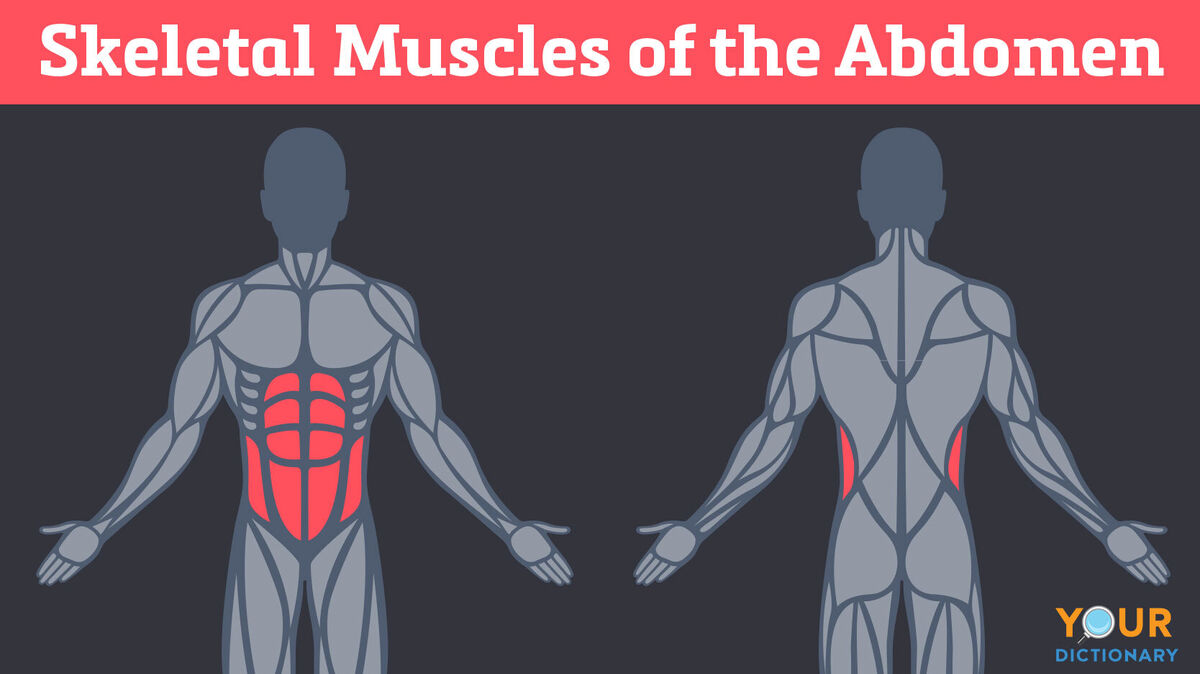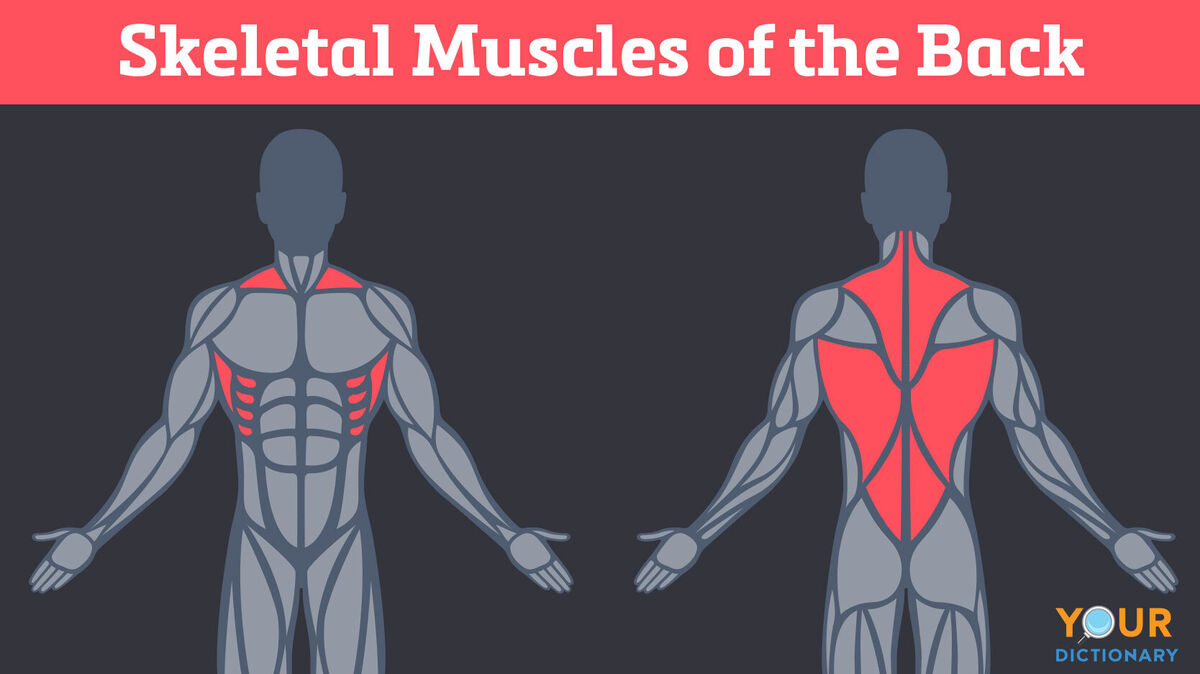
Skeletal muscles, also called striated muscles, are voluntary muscles that move the bones and support the skeleton. Superficial muscles are close to the skin and deep muscles are deeper inside the body. There are 640 skeletal muscles and almost all are found in pairs. Explore skeletal muscle function along with several skeletal muscle examples.
What Are the Skeletal Muscles?
Your body is full of muscles. However, the skeletal muscles are the ones that help you move. When you are running down the road or driving your car, you can thank your skeletal muscles. Since skeletal muscles are for movement, these are considered voluntary muscles, unlike the involuntary cardiac muscles. So when you use skeletal muscles, you are controlling them.
Since skeletal muscles are all about movement, you typically find these muscles in pairs or groups. For example, 7 muscles work together to control the movement of the eyes. There are also 4 muscles that work together to control the movement of the quadriceps.
Skeletal Muscles in the Human Body
The human body is full of skeletal muscles. How many skeletal muscles are in the human body? The answer is more than 600. Each muscle has a different function and helps with movement. Get the answer to, “Where is the skeletal muscle is found” by looking at a breakdown of the different skeletal muscles in your body.
Skeletal Muscles of the Arm
Every time you type a word on your smartphone or do a chin-up at the gym, the skeletal muscles of your arm need to move. From your bicep down into your wrist, your skeletal arm muscles run down the length of your arm. Some are short and thick, and others are long and thin. They are responsible for the bending, retracting and twisting of your arm and wrist.
A few of the muscles you use regularly include:
coracobrachialis
biceps brachii
brachialis anticus
triceps brachii
anconeus
pronator teres
flexor carpi radialis
palmaris longus
flexor carpi ulnaris
flexor digitorum superficialis
pronator quadratus
flexor digitorum profundus
flexor pollicis longus
brachioradialis
extensor carpi radialis longus
extensor carpi radialis brevis
extensor digitorum
extensor digiti minimi
extensor carpi ulnaris
supinator
abductor pollicis longus
extensor pollicis brevis
extensor pollicis longus
extensor indicis
Skeletal Muscles of the Hand
Scrolling on your cellphone wouldn’t be possible without the muscles of your hands. They help you to flex your fingers and thumbs, control movements and retract your figures in a thought. You can see a few of these muscles in the list below.
opponens pollicis
flexor pollicis brevis
abductor pollicis brevis
adductor pollicis
palmaris brevis
abductor digiti minimi
flexor digiti minimi brevis
opponens digiti minimi
lumbricals
dorsal interossei
palmar interossei
Skeletal Muscles of the Chest
The skeletal muscles of the chest work to help you breathe in and out. They also keep your ribs and bones in the proper position, in addition to protecting your vital organs like your heart. Several of these muscles work in pairs and layers to effectively protect and stabilize your chest.
external intercostals
internal intercostals
innermost intercostal
Subcostales
transversus thoracis
levatores costarum
serratus posterior inferior
serratus posterior superior
thoracic diaphragm
Skeletal Muscles of the Larynx
Speaking isn’t something you could do without your skeletal muscles. They are strategically positioned around your larynx to help you create different sounds and talk. If these muscles were destroyed, you wouldn’t be able to speak.
cricothyroid
posterior cricoarytenoid muscles
lateral cricoarytenoid
arytenoid
thyroarytenoid
Skeletal Muscles of the Leg
The muscles of your leg run from your knee to your calf. They control everything from bending your knee to rotating your ankle. They are also responsible for all the different movements of your foot, which is important for walking. Take a look at the skeletal muscles of the leg.

tibialis anterior
extensor hallucis longus
extensor digitorum longus
fibularis tertius
triceps surae
gastrocnemius
soleus
plantaris
popliteus
flexor hallucis longus
flexor digitorum longus i
tibialis posterior
fibularis longus
fibularis brevis
sextensor digitorum brevis
extensor hallucis brevis
Skeletal Muscles of the Thigh
When it comes to your thigh muscles, the quadriceps femoris is an important one. It’s the largest muscle in your body and a powerhouse in helping you move. You also have several other skeletal muscles for everything from moving your hips to holding your leg bone, knee and hip in place.
The main players of the thigh muscles include:
sartorius
quadriceps femoris
rectus femoris
vastus lateralis
vastus intermedius
vastus medialis
articularis genus
biceps femoris
semitendinosus
semimembranosus
gracilis
pectineus
pectineus
adductor longus
adductor magnus
Skeletal Muscles of the Neck
You have skeletal muscles running all along your neck. These muscles not only allow you to rotate your neck, but they aid in swallowing, so you don’t choke. The muscles that help you chew, make up the bottom of the mouth and attach to your scapula are found in this group.
platysma
ternocleidomastoid
digastric
stylohyoid
mylohyoid
geniohyoid
sternohyoid
sternothyreoideus
thyrohyoid
omohyoid
longus colli
longus capitis
rectus capitis anterior
rectus capitis lateralis
scalenus anterior
calenus medius
scalenus posterior
Skeletal Muscles of the Scalp and Eyes
From the movement of your eyes to raising your eyebrows, everything is controlled by the skeletal muscles of the eyes and scalp. You even have muscles in your eyes to dilate your pupil and help you see in the dark. Explore the list of the scalp and eye skeletal muscle examples.
occipitofrontalis
corrugator supercilii
depressor supercilii
levator palpebrae superioris
superior tarsal
superior rectus
inferior rectus
medial rectus
lateral rectus
superior oblique
obliquus oculi
ciliary
iris dilator
iris sphincter
Skeletal Muscles of the Vertebral Column
If you run your finger down your back, you can feel the vertebrae. You have several muscles in that area that help you tilt your head, extend your back and move your shoulders up and down. See the names of a few of them.
trapezius
latissimus dorsi
rhomboid major
rhomboid minor
levator scapulae
Skeletal Muscles of the Abdomen
Everyone likes a good set of abs. Well, you wouldn’t have them if it weren’t for the work of the muscles in your abdomen. They do everything from help you sit up to support your abdominal wall. The muscle you need for twerking is even found in this group.

external oblique
internal oblique
transversus abdominis
rectus abdominis
pyramidalis
cremaster
quadratus lumborum
Skeletal Muscles of the Nose
When you sniff a flower, you are using the skeletal muscles of your nose. These muscles are pivotal in flaring your nostrils and the movement of your sniffer.
procerus
nasalis
dilator naris
depressor septi
levator labii superioris alaeque nasi
Skeletal Muscles of the Mouth
An expression can say a million words, right? Well, it takes a few muscles to accomplish that. The skeletal muscles of the mouth work to help you chew food and make facial expressions. Everything from your smile to your look of surprise is because you have a few facial skeletal muscles on your side. Some of the major players in your snarky expression include these muscles.
levator anguli oris
depressor anguli oris
evator labii superioris
depressor labii inferioris
zygomatic major
zygomaticus minor
mentalis
buccinator
orbicularis oris
risorius
Skeletal Muscles of the Tongue
You might think your tongue is just for tasting, but it plays a large part in your speech. Being able to move, flatten, roll, and lift your tongue helps you say words and eat food. A few of the major skeletal muscles working in your tongue are these muscles.
genioglossus
hyoglossus
chondroglossus
styloglossus
superior longitudinal
transversus linguæ
inferior longitudinal
Skeletal Muscles of the Pharynx
The process of swallowing your food takes a few different muscles. And the skeletal muscles of the pharynx are a key player. Not only do they support and make up the pharynx, but they also help you to project sound when you speak and push food through your esophagus.
inferior pharyngeal constrictor
middle pharyngeal constrictor
superior pharyngeal constrictor
stylopharyngeus
Salpingopharyngeus
Skeletal Muscles of the Back
You might not realize how important the muscles of your back are until you hurt one of them. Then, you’ll quickly realize that the muscles of your back are the ones that create movement. From bending over to pick up that spoon to sitting down in your car, the back muscles keep you going. They also play a role in the movement of your hips, along with supporting all your precious bones. See a list of muscles found in your back.

splenius capitis
splenius cervicis
iliocostalis
longissimus
latissimus dorsi
semispinalis dorsi
semispinalis cervicis
semispinalis capitis
multifidus
rotatores
intertransversarii
obliquus capitis inferior
obliquus capitis superior
Skeletal Muscle Examples
If you’ve ever hurt one of your skeletal muscles, you know just how important they are. From the tips of your toes to the movement of your eyebrows, they are there for it all. Now that you’ve looked at skeletal muscle examples, check out the smooth muscles of your body.